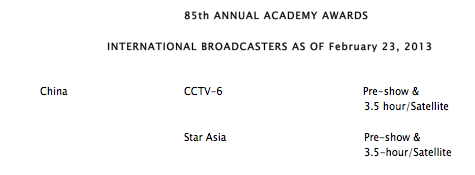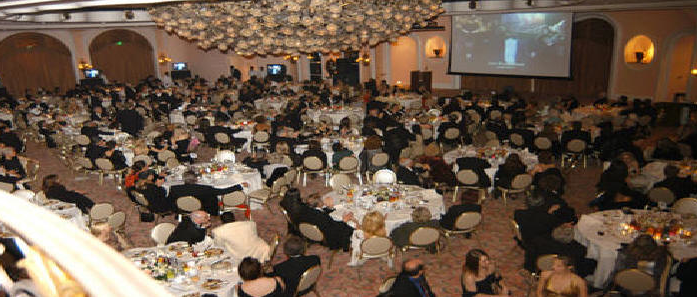Linda Stern
, Reuters
? ? ?
4 hrs.
WASHINGTON - Home sales and prices are rising briskly in those neighborhoods where the well-heeled like to plant their mailboxes: along Chicago's north shore, in the San Francisco Bay area and in the haute Hamptons.
Sales of properties worth between $750,000 and $1 million are up 38.7 percent over a year ago; $1 million-plus property sales are up 25.7 percent, according to the National Association of Realtors.
The luxury real estate revival is being fueled, in part, by another resurgence: so-called jumbo mortgages - those loans, typically over $417,000, that are too big to qualify for purchase by federal agencies, namely Fannie Mae and Freddie Mac.
Jumbo loans are returning to the mortgage market after almost disappearing entirely in the wake of the credit crisis of 2008 and the real estate meltdown. Most lenders stopped making new jumbo loans when the private secondary market dried up in the credit crunch.
Now the credit markets are comparatively stable. Lenders, who are only making these big loans to the most highly qualified borrowers, now see jumbos as a safe and profitable way to make money on their low-cost deposits. And secondary market investors are starting to regain their taste for these comparatively high-yielding loans. Moreover, once-pricey jumbo loans are being offered at interest rates that are barely higher than conventional mortgages.
"The jumbo market may fare better than the overall mortgage market in 2013," Guy Cecala, publisher of Inside Mortgage Finance said.
But he and other observers question whether the jumbo loan market can return to its past size without a full recovery in the secondary market, which is a fraction of its former self. And new mortgage regulations could limit lenders starting in 2014.
"We are definitely enthusiastic," says Tom Wind, executive vice president of residential and consumer lending at EverBank Financial Corp. in Jacksonville, Fla. He sees growing investor demand for these loans allowing the market to grow. At current rates - roughly 0.23 percentage points above conventional mortgages - they provide nice yields for banks who want to keep the loans in their portfolios, too.
For the four weeks ending Feb. 22, new jumbo activity was up 60 percent from the same period a year ago, according to Mortgage Daily, a trade publication that has been consistently reporting year-over-year increases in jumbo activity.
Even though loan volume is increasing, it is nowhere near 2007 levels, when the industry made $348 billion in jumbo loans. Last year, roughly $200 billion of jumbo mortgages were made, and Cecala says that he expects total 2013 volume to approach $220 billion.
In some expensive markets, loans don't start being classified as jumbo until they exceed $625,500; that limit was even higher for part of 2007, meaning that the 2007 figure represents a smaller potential jumbo market and isn't directly comparable.
Mortgage market leader Wells Fargo has increased its jumbo loan volume for three years straight, said Greg Gwizdz, an executive vice-president. In 2010, Wells Fargo issued a total of $10 billion in jumbo loans. That rose to $27 billion in 2011 and to $41 billion in 2012, with the average loan at $1 million, Gwizdz said.
Less than half of jumbos tend to go to refinancings, while almost three quarters of conventional mortgages were for refinancings last year, Cecala said. That, too, should boost jumbo activity in 2013 as refis taper off and the housing market picks up.
Better deals, narrower spreads
Interest rates on jumbos have been approaching those of the so-called conforming loans, even though they don't have agency backing. In mid-February, for example, the average rate on 30-year fixed-rate jumbo loans was 3.98 percent while the average rate for 30-year conventional loans was 3.75 percent, making the spread between them just 0.23 percentage points, the Mortgage Bankers Association said.
Pre-crisis, rates on jumbo loans were typically around 0.25 percentage points higher than those on conventional loans, says Keith Gumbinger of HSH Associates, a mortgage research firm in Pompton Plains, N.J. At the height of the financial crisis in December 2008, it hit 1.8 percentage points.
"I just locked in a $900,000 loan at 3.5 percent," said Amy Slotnick, vice president of Fairway Independent Mortgage Corp., in Needham, Mass. "I can't even get a conforming loan at that rate."
Jumbos loans are priced well now because only the most qualified borrowers can get them. Lending standards, which were notoriously lax pre-crisis, have intensified as the loans have returned to market.
"At one point all you needed was a pulse" says Matt Silver, director of the Chicago Association of Realtors, and a real estate agent who specializes in high end Chicago properties. "Now you have to have all of your ducks in a row."
Those standards will get even more restrictive in 2014, when Consumer Financial Protection Bureau rules take effect. The CFPB rules are likely to kill the market for interest-only mortgages that had made up roughly 10 percent of the jumbo market, according to the Mortgage Bankers of America.
The rules also offer lawsuit protection for lenders who require that borrowers keep their debt payments at 43 percent or less of monthly income. Rick Sharga, of Carrington Mortgage Holdings in Greenwich, Conn., said that could be problematic for the jumbo market, because many high-income and high net worth borrowers don't fit that guideline but still have plenty of money on hand to repay their loans.
Today a borrower typically needs to put up 30 percent of equity, show a FICO credit score topping 760, provide years of tax records and prove that he or she has a year of mortgage payments in the bank. After meeting that stringent criteria, the typical jumbo borrower is probably a reasonable bet for a lender.
"Not just a good risk," says Slotnick. "A great risk."
Secondary market pickup
Like many jumbo lenders, Wells has been keeping the loans it makes in its own portfolio instead of selling them off.
"Holding a jumbo loan is an attractive investment for banks sitting on lots of low rate deposits," says Mike Fratantoni, vice president of research and economics at the Mortgage Bankers Association. But eventually, lenders will need to sell off those loans to raise more money to make loans.
There has been some activity in the secondary market for these big loans - Redwood Trust Inc. led the way when it started packaging jumbos in 2010. Credit Suisse and Shellpoint Partners, a private mortgage-focused firm, have followed or made plans to do so, and JP Morgan Chase & Co. is reportedly preparing its own jumbo-backed offering. But other investment firms, burned in the credit crisis, remain cautious.
Indeed, back in 2007, 61.3 percent of jumbo loans were securitized, Cecala said. In the first 9 months of 2012, just 1.7 percent of jumbo loans were securitized, up from 0.4 percent in 2011 and 0.2 percent in 2010.
Secondary market players and investors may come around as they see how the jumbo bet has paid off for Redwood - the real estate investment trust's share price is up roughly 96 percent since Dec. 31, 2011. Redwood itself plans to buy and package $7 billion in jumbo loans in 2013, more than triple the $2 billion it securitized in 2012.
Without more Redwood-like deals, lenders - and particularly smaller banks like Everbank - will run out of cash to lend to jumbo borrowers. If rates rise, they will have other places to find yield.
Says HSH's Gumbinger: "There's no doubt (jumbos) are profitable today. But when you're sitting on $100 million in mortgages yielding 4 percent and you can use that capital to earn 6 or 7 or 8 percent? You're going to have to liquefy them somehow."
Additional reporting by Leah Schnurr and Tim Reid.
Copyright 2013 Thomson Reuters.
Source: http://www.nbcnews.com/business/jumbo-home-loans-are-back-far-below-2007-levels-1C8573250
american idol bonnaroo robin roberts Ashley Morrison El Chapo Guzman ufc Christmas Abbott

 Change. It seems like the last year has brought more change to mobile apps and the digital publishing space than the previous ten years combined. At the company where I work,?Zinio, we have watched our entire world change as we grew to 5,500 magazines and moved from desktop into PCs, iPads, smartphones and eBooks.
Change. It seems like the last year has brought more change to mobile apps and the digital publishing space than the previous ten years combined. At the company where I work,?Zinio, we have watched our entire world change as we grew to 5,500 magazines and moved from desktop into PCs, iPads, smartphones and eBooks.




 Software giant Microsoft has become the latest victim of a shameless and malicious computer hacking, according to a CNN report.
Software giant Microsoft has become the latest victim of a shameless and malicious computer hacking, according to a CNN report.